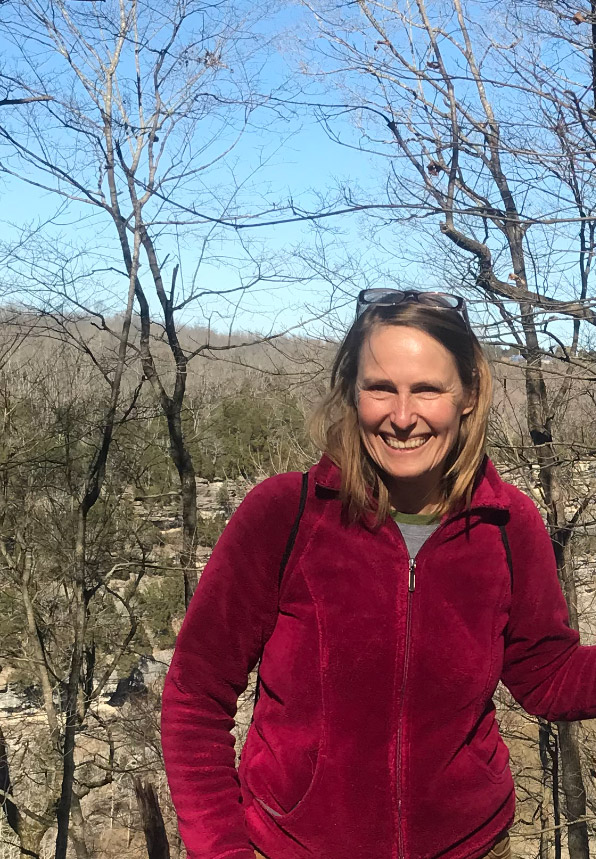Kathryn Newfont
 Term: Spring 2018
Term: Spring 2018
Contact: kathryn.newfont@uky.edu
“It is hard to say enough good things about my time at Grey Towers. The site is inspiring, the staff terrific, and the accommodations a delight. I had a remarkably productive stay, largely holed up in my gate-house quarters, where I could write as early and as late as I wished, and then fall asleep to the sound of running water. The staff (did I mention? terrific) helped me settle in nicely to the mansion office, the gatehouse, the town of Milford, and the beautiful Delaware Water Gap area. The chance to step away from ordinary responsibilities and focus fully on writing was a great and beautiful gift.”
Topic:
My wonderful time in residence at Grey Towers (spring 2018) focused on the early drafting stages of my new book project, a commons forest politics case study set in the southern Blue Ridge. The study examines a USFS timber-sale controversy that emerged in the Hot Springs area of western North Carolina just a few months after the agency issued its revised management plan for the Pisgah and Nantahala National Forests in 1994. Nearly a century before, in the early days of his forestry career in that part of the world, Gifford Pinchot astutely observed that local residents “regarded this country as their country, their common.” Demonstrating the deep and continuing truth of this analysis is a central focus of my scholarship. I explored it in my first book, Blue Ridge Commons: Environmental Activism and Forest History in Western North Carolina, and continue to do so in the current case study.
Despite Gifford Pinchot’s long-ago observation, the idea of “commons,” meaning a set of cultural systems centered on valuable shared property, has yet to be widely understood beyond practitioners and specialists. Like my earlier work, my current project aims to help correct that problem. The entire National Forest system is itself a commons, and it also intersects other kinds of commons systems, such as those appearing in the local perspectives Pinchot mentioned. My current project uses the Bluff Mountain controversy as a lens into these plural commons systems and into the broader outlines of Appalachian commons traditions.
I am grateful to the Grey Towers Heritage Association and the staff at Grey Towers for making this opportunity possible. Not only did I get a great deal of first-stage drafting done, but the thoughtful audience at my research presentation provided valuable early feedback I will draw on as I move forward with the manuscript.
